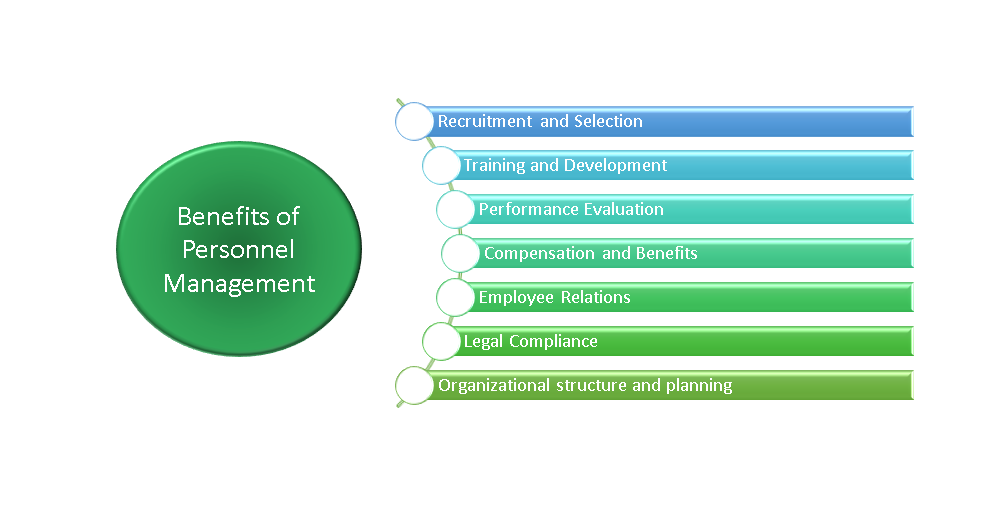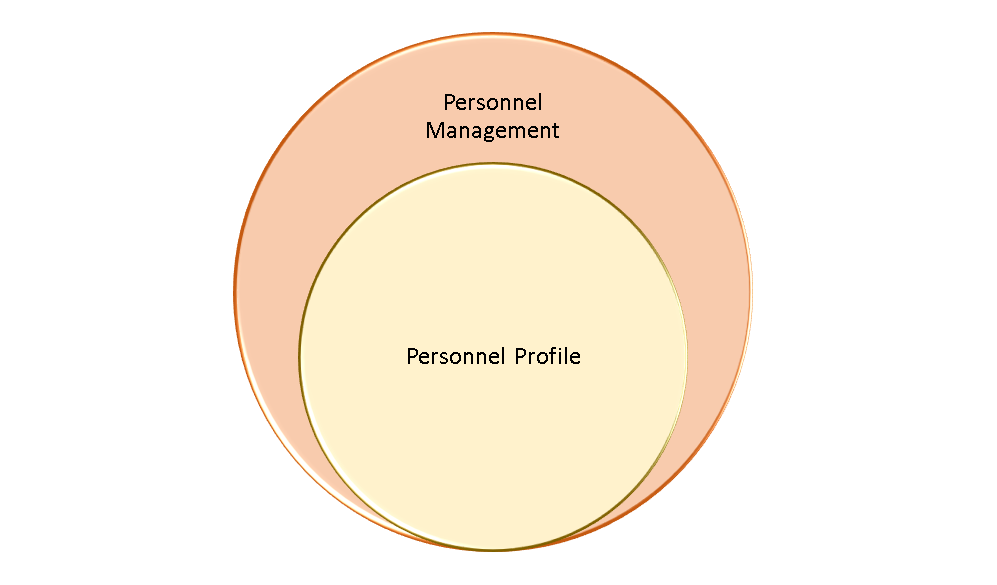Personnel Management
- Personnel management, also known as human resource management (HRM), is a crucial aspect of an organization's overall management and is concerned with the effective utilization of human resources to achieve organizational goals. It encompasses various activities and processes aimed at acquiring, developing, motivating, and retaining employees.
- The primary objective of personnel management is to ensure that the right people are hired, trained, and assigned to appropriate roles within an organization. It involves strategic planning to determine the workforce requirements, job analysis and design to define roles and responsibilities, and recruitment and selection processes to attract qualified candidates.
- Once personnel are hired, their development and training become important aspects of personnel management. This includes providing necessary training programs, performance management, and career development opportunities to enhance their skills and capabilities.
- Personnel management also deals with employee compensation and benefits, ensuring that employees are rewarded fairly for their contributions. It involves designing compensation structures, managing payroll, administering performance-based incentives, and providing employee benefits such as health insurance, retirement plans, and paid time off.
- Another crucial aspect of personnel management is employee relations. This involves establishing and maintaining positive relationships between management and employees, addressing employee grievances, maintaining a safe and healthy work environment, and fostering a positive organizational culture.
- In summary, personnel management is a comprehensive process that encompasses recruitment, training, compensation, employee relations, and various other activities and strategies to effectively manage an organization's workforce. It plays a vital role in ensuring that organizations have the right people in the right positions and creates an environment conducive to employee productivity and satisfaction.
The scope of personnel management typically includes the following areas:
- Recruitment and Selection: This involves attracting and hiring qualified individuals for job positions within the organization, including creating job descriptions, advertising vacancies, conducting interviews, and selecting the most suitable candidates.
- Training and Development: Personnel management ensures that employees receive the necessary training and development opportunities to enhance their skills, knowledge, and performance. This includes identifying training needs, designing and delivering training programs, and fostering a culture of continuous learning.
- Performance Management: It involves establishing performance goals, providing regular feedback, conducting performance evaluations, and rewarding or providing corrective actions based on employee performance. The scope includes performance appraisal systems, goal setting, and monitoring employee progress.
- Compensation and Benefits: Personnel management encompasses designing and administering fair and competitive compensation systems, including salary structures, bonuses, incentives, and benefits packages. It also covers managing employee benefits like healthcare, retirement plans, and leave policies.
- Employee Relations: This area focuses on fostering positive relationships between employees and the organization. Personnel management addresses employee grievances, promotes effective communication, ensures compliance with labor laws, and facilitates conflict resolution and employee engagement initiatives.
- Health and Safety: Ensuring the well-being and safety of employees is another important aspect. Personnel management includes developing and implementing health and safety policies, conducting risk assessments, providing safety training, and promoting a healthy work environment.
- Employee Motivation and Engagement: It involves implementing strategies to motivate and engage employees, fostering a positive work culture, recognizing and rewarding achievements, and promoting employee satisfaction and loyalty.

